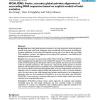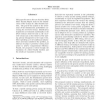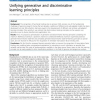497 search results - page 11 / 100 » DNA Computing Based on Splicing: Universality Results |
BMCBI
2006
13 years 7 months ago
2006
Background: Automatic annotation of sequenced eukaryotic genomes integrates a combination of methodologies such as ab-initio methods and alignment of homologous genes and/or prote...
BMCBI
2006
13 years 7 months ago
2006
Background: Non-coding DNA sequences comprise a very large proportion of the total genomic content of mammals, most other vertebrates, many invertebrates, and most plants. Unravel...
JMLR
2010
13 years 2 months ago
2010
This paper focuses on the use of nuclear DNA Short Tandem Repeat traits for the identification of the victims of a Mass Fatality Incident. The goal of the analysis is the assessme...
BMCBI
2010
13 years 7 months ago
2010
Background: The recognition of functional binding sites in genomic DNA remains one of the fundamental challenges of genome research. During the last decades, a plethora of differe...
BMCBI
2006
13 years 7 months ago
2006
Background: Identifying functional elements, such as transcriptional factor binding sites, is a fundamental step in reconstructing gene regulatory networks and remains a challengi...




